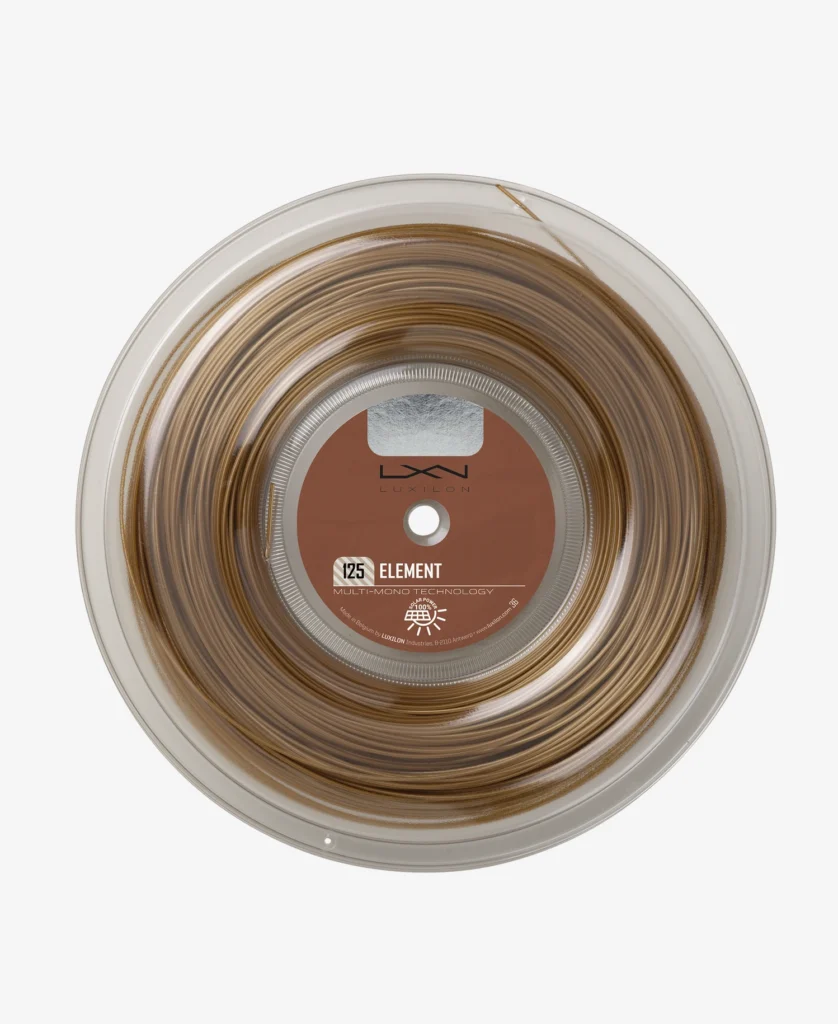String Types
Tennis string typically falls into 1 of 5 categories:
Natural Gut – is made of cows intestine. It has a high level of playability; comfort, feel and power. Natural gut holds its tension the best of all strings and is easy on the arm, perfect for those who suffer from arm injuries. This is a high end string, great for experienced players who are not concerned with their string durability. Natural gut is the most expensive string available.
Multi-filament – is made from hundreds of fibres wound together. Multi-filament strings offer playability (power, comfort & feel) the most similar to natural gut and are a good choice for those who suffer from arm injuries.
Synthetic gut – is a nylon string with a solid core and smaller outer wraps. Synthetic gut offers excellent all-round playability for the price.
Polyester – is the most durable of all strings. It is stiffer than all the other strings and generally used by more advanced players. Polyester strings are low powered but offer lots of spin and control. Polyester strings lose tension the quickest so need replacing more often. The stiff nature of polyester strings don’t make them a good choice for beginners or those suffering with arm injuries.
Hybrid – hybrid stringing involves combining two different strings. Mixing a polyester string with a multi-filament, natural gut or synthetic gut, for example, is a common mix of string. Mixing strings allows the player to get the combined benefit of different strings. For example, the comfort of a multi-filament string with the durability and spin of a polyester string. The string you put in the mains will dominate the overall performance of the string.
String Gauge
Tennis string comes in different thicknesses, called gauges.
Thinner string: more power, more spin, more comfort, less durable
Thicker string: less power, less spin, more durable
There is no universal guide to string gauge, therefore, one company’s 16L could be another company’s 17. See the list of simplified string gauges below.
15 – 1.40mm
15L – 1.35mm
16 – 1.30mm
16L – 1.28mm
17 – 1.25mm
17L – 1.20mm
18 – 1.10mm
The most common string gauges used are 17, 16L and 16. String gauge is personal preference and something you can play around with.
String Tension
Each racket has a recommended string tension and you can find this written on the frame of your racket. This will be in pounds (lbs) and / or kilograms (kg).
If you are unsure what tension to re-string your racket then string your racket in the middle of the recommended range. For example, if your recommended tension range is 48-58lbs, string your racket the first time at 53lbs. Then adjust +2lbs or -2lbs the next time you re-string your racket.
Power or control – the higher (tighter) the string tension the more control you will get and the lower the string tension the more power you will get.
Arm problems – if you have tennis elbow or are suffering with a sore arm, reducing your string tension could help. Reducing your string tension will reduce the stiffness of the string bed and will feel more comfortable.
String type – natural gut, multi-filament and synthetic gut strings are softer than polyester strings. Polyester string is stiffer and is, therefore, typically strung at lower tensions.
How often should you restring your tennis racket?
The string in your racket drops in tension over time from the moment the string is put into your racket. When your racket has lost most of its tension the playability of your racket will also be lost. Playability includes control, feel and power. It is, therefore, important to re-string your racket even if the string in your racket has not broken.
As a general rule of thumb you should restring your racket a minimum of every 6 months regardless of how often you play. If you play more than once a week you should restring your racket as many times a year as you play per week. For example, if you play 4 times a week you should re-string your racket at least 4 times a year.
I hope this post was of value to you. I’d love to hear your thoughts, please do send me a message on Instagram (simonjamescoaching).
Thank you for reading.
Simon James



